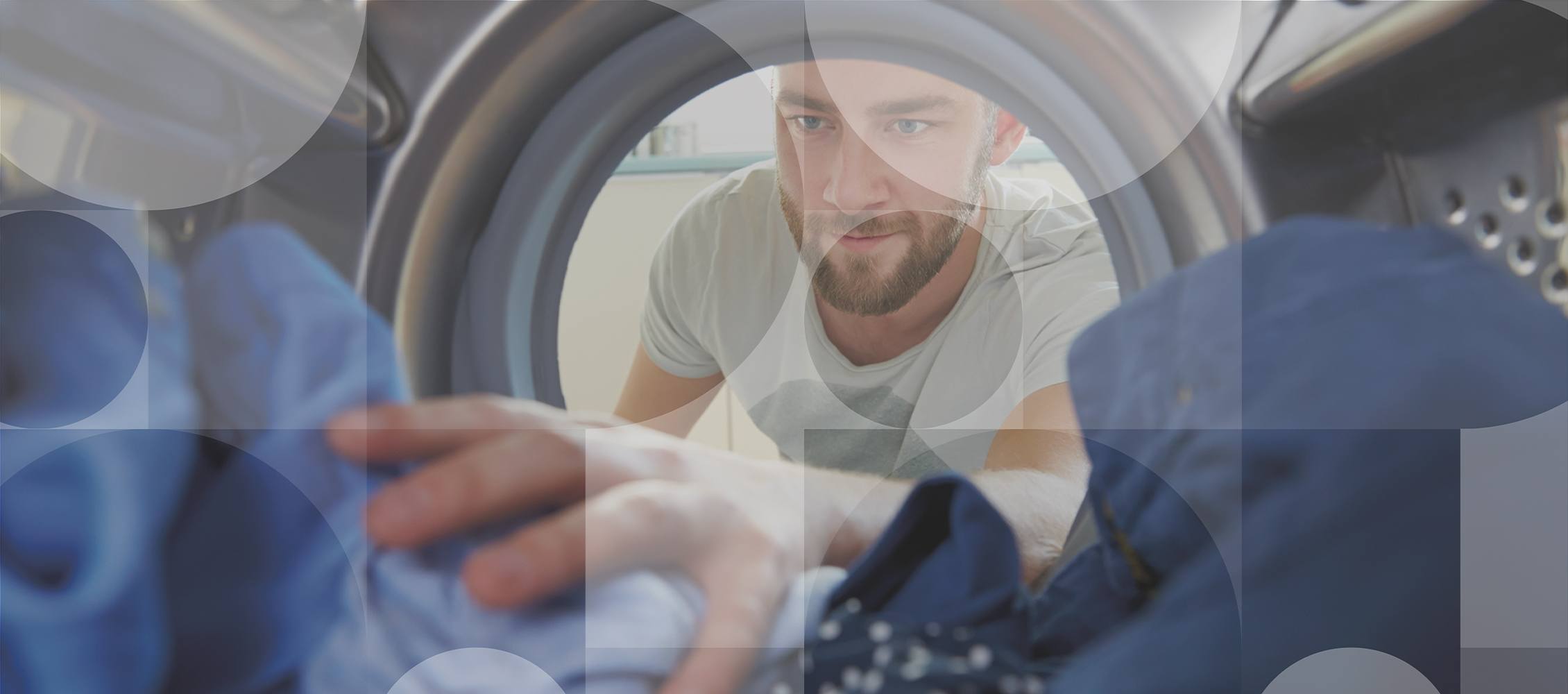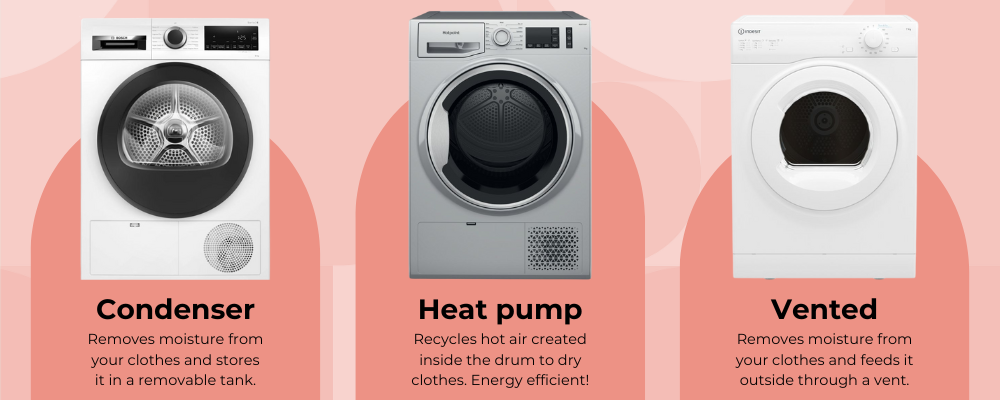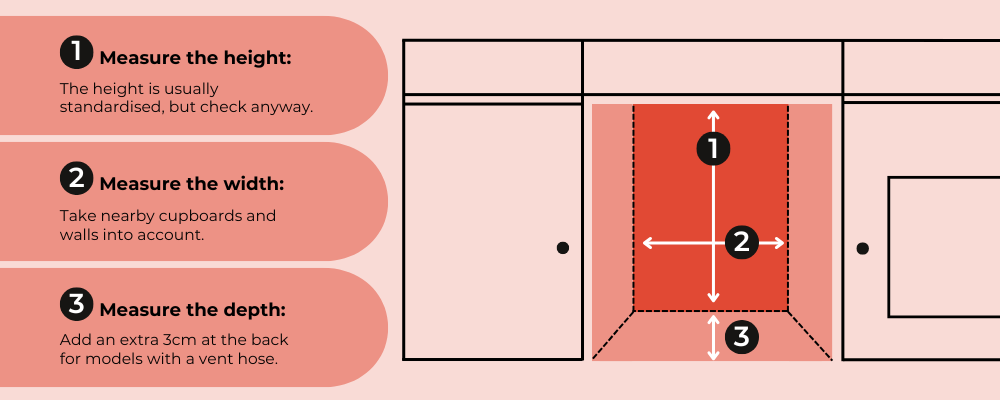
Tumble dryer
buying guide
With so many options to choose from, shopping for a new tumble dryer can be difficult. Thankfully, our comprehensive buying guide is here to help!
Our experts have broken down the differences between heat pump, condenser, and vented dryers, and debunked common myths around energy efficiency. Our aim is to help you choose the perfect capacity and features for your household needs, so you can feel confident and supported in your new purchase.
Types of tumble dryers
Whether you're looking for a budget-friendly option or a more eco-friendly choice, there are three main types of tumble dryers that you’ll come across: condenser, heat pump, and vented. Assessing the benefits of each is crucial in making your choice.
How to measure a tumble dryer
It’s time to get out the measuring tape! There’s nothing worse than buying the perfect tumble dryer only for it to end up being too large to fit anywhere. Although most tumble dryers are of a standard size, it’s important that you measure the space you want your tumble dryer to fit in by considering the big three before you buy: width, height and depth.
Choosing the right capacity
When it comes to picking out the capacity size that’s right for your laundry needs, there are two key questions to ask yourself first. How much laundry are you doing? And how often are you doing it? Generally, there are three sizes available for tumble dryers: small, medium and large capacity.
A small-capacity tumble dryer can be ideal for those who wash and dry less, especially in the case of smaller families. These dryers are able to comfortably run loads up to around 5kg (or 17 hand towels), but this might mean you’ll need to run several cycles on a particularly heavy laundry day.
A medium-capacity tumble dryer can dry up to 8kg (or 22 hand towels). This is one of the most popular sizes on the market covering all your everyday drying needs for a household of 3-4 people.
Finally, a large-capacity tumble dryer, with a capacity of 8kg or more (up to 25 hand towels in a single cycle), is a great choice if you have a bigger household. Larger capacity dryers are also usually the most energy-efficient way of drying your laundry as there is more space for your garments to circulate. Because of this, clothes take less time to dry than smaller or more compact dryers.
Energy efficient tumble dryers
As households try to cut down energy costs and save on bills, knowing you’ll be investing in an energy efficient piece of machinery is essential. Luckily, there are energy-efficient ways to use a tumble dryer and tools to help you discover the appliance that meets your usage needs.
Spanning from an A rating (the most energy efficient) to G (the least energy efficient), energy labels can be a helpful indicator for customers when choosing which dryer products can save energy and money. For example, an A-rated tumble dryer would cost you roughly half as much to run when compared to a C-rated tumble dryer. Our range of heat pump dryers are generally the most energy-efficient models, achieving up to an impressive A+++ rating from brands such as Samsung and Hotpoint.
Top tip: Before you think about drying your clothes, try a higher spin on your washing machine to begin with the least amount of moisture possible. Leaving lint in the dryer can reduce the effectiveness of each load, so make sure to remove it from the filter after every cycle. Always aim to run a full load of clothes where possible -you’ll save more energy compared to running a half-load (for example, a 9kg dryer costs 2.9 kWh for a half load, compared to 5.34 kWh for a full load).
Tumble dryer features
With everything from anti-creasing to smart control, modern tumble dryers are packed with additional features to make life that little bit easier. But what do they all do? These are some of the top features to look out for when you’re shopping for your new dryer and how they all work.
Rent your tumble dryer
Did you know that many of our products, including tumble dryers, are available for rental? Enjoy the latest tech with low, monthly payments and regular opportunities to upgrade, find out more about Hughes Rental here.










